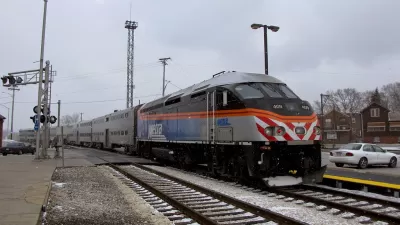A new station evaluation policy, expected for adoption by the Metra Board of Directors in May, would make it easier to shut down "underperforming" stations.

"Metra’s Board of Directors is preparing to approve a policy for adding new stations and closing down existing stations that could potentially slash the number of South Side stations," reports Igor Studenkov.
"The preliminary draft of the station evaluation policy was released for public comment following the railroad’s March 2019 board meeting. The board expects to approve the policy during its May 15 meeting, when 2018 ridership numbers will be released," according to Studenkov.
According to Studenkov's analysis of the evaluation policy, the South Side is likely to bear the brunt of any station reductions. "The Metra Electric Line’s Blue Island branch could lose all of its Chicago stations, effectively removing all rail service from the West Pullman and Roseland communities," for instance. Studenkov also explains how the new policy will speed up the process for closing stations.
On the other side of the equation, adding stations, Studenkov notes that the process requires a paid sponsor to fund the study required to plan and build a new station.
In 2017, Metra made news for cutting service to the South Side, contributing to a narrative implied here that Metra is in the process of abandoning much of its service on the South Side of Chicago.
FULL STORY: Metra Considers a New Policy for Adding Infill Stations, Closing Low-Ridership Stops

Trump Administration Could Effectively End Housing Voucher Program
Federal officials are eyeing major cuts to the Section 8 program that helps millions of low-income households pay rent.

Planetizen Federal Action Tracker
A weekly monitor of how Trump’s orders and actions are impacting planners and planning in America.

Ken Jennings Launches Transit Web Series
The Jeopardy champ wants you to ride public transit.

Rebuilding Smarter: How LA County Is Guiding Fire-Ravaged Communities Toward Resilience
Los Angeles County is leading a coordinated effort to help fire-impacted communities rebuild with resilience by providing recovery resources, promoting fire-wise design, and aligning reconstruction with broader sustainability and climate goals.

When Borders Blur: Regional Collaboration in Action
As regional challenges outgrow city boundaries, “When Borders Blur” explores how cross-jurisdictional collaboration can drive smarter, more resilient urban planning, sharing real-world lessons from thriving partnerships across North America.

Philadelphia Is Expanding its Network of Roundabouts
Roundabouts are widely shown to decrease traffic speed, reduce congestion, and improve efficiency.
Urban Design for Planners 1: Software Tools
This six-course series explores essential urban design concepts using open source software and equips planners with the tools they need to participate fully in the urban design process.
Planning for Universal Design
Learn the tools for implementing Universal Design in planning regulations.
Ada County Highway District
Clanton & Associates, Inc.
Jessamine County Fiscal Court
Institute for Housing and Urban Development Studies (IHS)
City of Grandview
Harvard GSD Executive Education
Toledo-Lucas County Plan Commissions
Salt Lake City
NYU Wagner Graduate School of Public Service





























